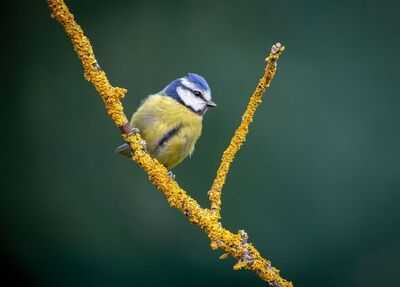
There aren't many garden birds more loved than the cheeky, bright blue tit. These small birds stay in the UK throughout winter and are often seen hopping between feeders, flitting through hedges or hanging upside down from tree branches. But their numbers have been declining over the last 40 years, partly due to the loss of woodland.
Experts say gardeners can help by creating better habitats and making sure food is available all year round. Blue tits eat thousands of caterpillars during the warmer months, which helps keep plant-damaging pests under control. But during winter, they rely more on seeds, berries, and whatever food they can find in gardens.
They'll often return to the same spots in a feeding loop, and more than 200 birds can visit a single nut feeder in one day.
One simple way to attract more blue tits is by planting something now that will provide them with food and shelter during the colder months.
Experts at Better Planet Education say: "Blue tits are noisy, sociable and inquisitive birds
"In autumn, food from the hedgerow is important, including hawthorn and elderberries. The blue tits' strong, stubby beaks can break into tough tree seeds, such as beech mast.
"The main winter food is seeds; blue tits are often seen feeding in gardens where they readily accept nuts, fat, etc."


The Royal Horticultural Society (RHS) adds that planting Sambucus, more commonly known as elder, is a great choice for anyone wanting to support birds and wildlife in general this winter.
Elders are hardy, easy to grow, and thrive in both sun and partial shade. They produce big clusters of berries in autumn, which blue tits love to eat.
These berries can remain on the tree into winter, making them a valuable food source when insects are scarce.
The most widely grown type is Sambucus nigra, a native species that supports a wide range of wildlife. Its leaves also feed the caterpillars, which in turn helps blue tits during breeding season.

The RHS explains: "Elder trees and shrubs are ideal for natural gardens. They provide shelter, berries for birds and mammals, and flowers that attract pollinating insects."
They can grow up to 6m tall if left unpruned but can also be trimmed back each year to keep them smaller.
Some cultivars have colourful leaves or flowers, adding extra visual interest to the garden.
Elders are best planted in autumn or spring and prefer well-drained soil. Gardeners should dig in compost or well-rotted manure before planting to help them get established.
They are widely available from garden centres, nurseries and online, often sold in 3-litre pots. There's no need to buy large trees, as elders grow quickly.
Even in small gardens, a well-placed elder shrub can make a big difference. It offers food and shelter at a time when birds need it most, and helps blue tits stick around through the toughest part of the year.
You may also like

Is Jalen Green playing tonight vs. Los Angeles Clippers? Phoenix Suns star's health status for upcoming game revealed (11-06-2025)

Sky Sports F1 pundit pulls out of Brazilian Grand Prix duties as health update issued

Strictly Chris McCausland's three-word response as he addresses replacing Tess and Claudia

Coco Gauff banks monster payday despite WTA Finals defeat to Aryna Sabalenka

Asmongold urges advertisers and Amazon to act after Twitch unbans Nina Lin







